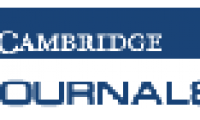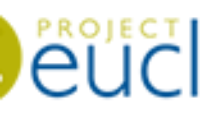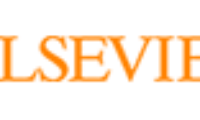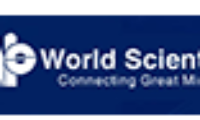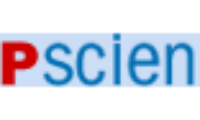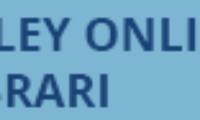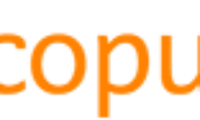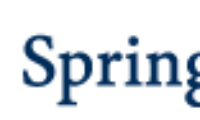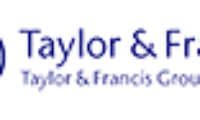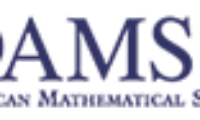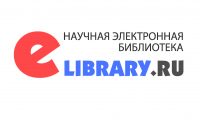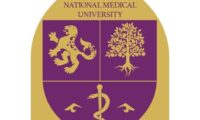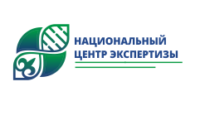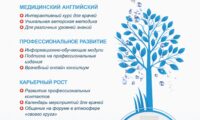The procedure for submission and conditions of publication of manuscripts
in the scientific and practical journal
“Pharmacy of Kazakhstan”
In accordance with the international rules of publication ethics, the journal strictly checks and evaluates manuscripts for anti-plagiarism, duplication or borrowing of previously published texts, including the author(s). The subsequent re-publication of articles in other publications is also not allowed.
Such articles will be retracted (withdrawn from databases), and sanctions will be applied to authors found to have violated ethics standards, up to blacklisting their names, which will negatively affect their scientific reputation and make our further cooperation impossible.
Please observe the rules of publication ethics of the journal “Pharmacy of Kazakhstan” and make references to all sources used in good faith, avoiding borrowings and duplications.
Acceptance of articles for publication is carried out exclusively by receiving them by the editorial board in electronic form on the journal’s website. To do this, the authors (contact person) should carefully familiarize themselves with the Requirements for the design of an electronic article and the procedure for sending the article in electronic form to the editorial office (see below).
When submitting an article to the editorial office, it is recommended to follow the following rules, compiled taking into account the Uniform Requirements for Manuscripts submitted for Publication in Biomedical Journals (Uniform Requirements for Manuscripts Submitted to Biomedical Journals), developed by the International Committee of Medical Journal Editors (International Committee of Medical Journal Editors, www.icmje.org ).
All copyrighted materials submitted for publication in the journal must be designed in accordance with the requirements specified below. Manuscripts that do not have the appropriate design are not accepted for consideration.
The editorial board accepts for consideration only previously unpublished manuscripts that correspond to the journal’s orientation and criteria of scientific quality. Manuscripts should be relevant on the subject, significant from a scientific and practical point of view, clearly structured compositionally (problem statement, solutions, conclusions and suggestions).
The article should be written in good Russian, English or Kazakh. The volume of the article (excluding the abstract, information about the authors and the list of references) is 1.5 – 5 thousand words.
When preparing a manuscript, it is necessary to adhere to the following metadata structure, presented in Russian and English:
classifiers of the UDC article;
surname, first name and patronymic of the author(s); academic degree, academic title, honorary title (if any); position, place of work; name of the organization; contact information: e-mail, city, country of residence, contact phone numbers for communication with the editorial office of the journal;
title of the article;
ORCID (if available) is a unique number of a scientist, which allows you to identify exactly his publications, patents, grants received and other results of scientific activity (each author can get this unique number by registering on the website http://orcid.org /);
abstract (200 – 350 words);
keywords (8-12 words).
At the end of the article there is a list of sources in Russian, Kazakh and English with transliteration.
When translating a manuscript into English with the help of a translator who is not an expert in this field, it is recommended to give the text for editing to a native speaker or a specialist who has used English professionally for a long time.
All articles necessarily undergo a two-way blind review. The database of reviewers is available on the website. The manuscripts received by the editorial board are not returned to the authors.
Manuscripts undergo scientific and literary editing.
By submitting materials to the editorial office of the journal, the author obviously agrees to the rules of publication and to the placement of his materials in the public domain by filling out documents in the online article submission system.
Structure of the scientific article:
What is IMRAD?
The abbreviation IMRAD consists of the first letters of the four key sections of the article — Introduction, Methods, Results and Discussion. This standard (template) for the design of scientific articles was developed in the 1970s and actually became mandatory for articles based on empirical research. Each original scientific article has the following structure:
Title (Title);
Abstract (Abstract);
Introduction;
Methods;
Results (Results);
Discussion;
Conclusions;
References.
Below we will take a detailed look at each of these elements.
Title of the scientific article
A properly composed title is a beautiful advertising showcase of your article. It should tell even an unprepared person about the merits of your material. From a good title of a scientific article, the reader also learns about the purpose and object of the study.
Now let’s deal with the common mistakes of the authors.
Editors of journals do not recommend using abbreviations and heaps of terms.
Clickbait (parasitism on the headlines of highly cited articles — approx.), false imagery, slang words and expressions, as well as ambiguity inherent in media headlines are unacceptable in the title.
The ideal title consists of 7-10 words, exceeding the number of words is unacceptable, but there are exceptions that you can learn about from the rules for authors published on the website of the journal to which you submit your text.
Annotation
Readers’ evaluation of scientific articles in most cases is limited to viewing headings, reading annotations and keywords, studying the list of cited sources.
An abstract, or a brief summary of a scientific article, is perhaps the most important of these evaluation elements. After reviewing the text of the abstract, the scientist decides whether he should continue reading. Keep in mind that it is often necessary to pay for access to the full text of a scientific article, in this case, special attention should be paid to the preparation of the abstract.
A properly compiled abstract performs several functions:
represents the goals and objectives of your research;
briefly explains the research methodology;
informs about the results you have achieved;
substantiates the importance of research for science.
Typical errors in the annotation:
Incoherent abstract text, overloaded with terminology. It is unclear where in the annotation the beginning is, where the end is, what the author wanted to say.
The abstract is overflowing with “water” and fragments from the annotations of highly cited works to enhance the significance.
The amount of text in the annotation has been exceeded. Magazines recommend sticking to 150-200 words.
Introduction
Introduction is a complex element of a scientific article for those authors who are used to writing in a journalistic style. The introductory part of the article has no purpose to tell about the history of mankind from the beginning of time, in the introductory part (as well as in the annotation) there should be no “water”, detached philosophical arguments that are not directly related to the study, arguments about the impermanence of being and comments on acute socio-political issues.
A mandatory entry is a literature review, which should integrate your article into the corpus of scientific materials and publications. To write an introduction , you also need to answer three questions: What is known about the subject of the study? What is unknown? What will the author talk about in this article, what research contribution will he make?
Check the text of the introduction on the checklist:
Is the optics of the study defined, namely, are there answers to the following questions in the introduction: 1) Why is the research topic relevant? 2) What research practices and tools, in your opinion, should be used to study the object? 3) How does your work differ from the work of other scientists?
What niche does your work occupy in the corpus of similar research papers?
Are the key hypotheses for research indicated in the introduction of your work? Is the research apparatus sufficiently clear to the reader?
Check the flaws and errors in the introduction:
The introduction assumes some review of the literature – this is the starting point of your research. You should not turn the main text of the article into a series of bibliographic references.
Template expressions like: “This topic is widely represented in the works of domestic and foreign scientists”, “The topic of this study is poorly developed by Russian scientists” are unacceptable.
The literature review exceeds the 1000 words allotted for it.
Methods and materials
Usually this part of the work does not cause problems for authors who have conducted qualitative research. In this case, it is enough to simply retell the research report, transfer from it descriptions of methods, devices with which you studied the object, data.
It is important that the data in your study are valid and the methods are correctly presented. All this is necessary so that reviewers, and after publication— other scientists can reproduce your research.
Results
The shortest, but no less important, key section of a scientific article. The author is required to present the results of the work done, if necessary, to make the layout of the data into tables, graphs, illustrations and links to data sets (datasets) are allowed.
Discussion
In this part of the scientific article, the author presents his interpretation of the data obtained as a result of the study. But a “bare” interpretation is not enough for scientific periodicals: it is necessary to explain once again the similarities and differences of the author’s approaches and the overall vision of the work. Compare the results with the experience of other scientists.
Check the structure according to the checklist:
How well are the results presented and understood by readers?
Do the results of your research correlate with the experience of other scientists?
Are there weaknesses in the study? Are there some frameworks that you have adhered to? Be sure to tell us about them.
Are the results of your work applicable for further research?
Has your hypothesis been confirmed by the results of the study?
Prospects for further research.
Conclusions
Each scientific article ends with the results of the study. From this part of the work, readers will find out whether you have managed to achieve your goal, prove or disprove some hypothesis. Here it is worth recalling once again the importance of research work for the development of science. What do the obtained data give to the community of scientists? Who and how will be able to use the acquired knowledge in practice in the future? What aspects of the study need improvement?
Stages of article review
Moderation. The article is considered by the issuing editor from the point of view of compliance with the design requirements and can be sent to the author for revision.
Reviewing. The article is sent for two-way blind review to members of the editorial board and/or external reviewers. The maximum review period is no more than 1 month.
The article is accepted or rejected based on the conclusions of the reviewers and the decision of the editor-in-chief. All incoming articles are checked for originality with the help of appropriate electronic resources and systems. The following formulations are used in the message to the author about the results of the review:
– the article has been reviewed and accepted for publication;
– the article has been reviewed and requires some improvement;
– the article was reviewed and rejected.
The main reasons for the rejection of articles are inconsistency with the scientific field of the journal, a significant proportion of borrowings and re—publication of their own results, lack of scientific novelty.
The editorial board does not enter into correspondence with the authors about the conclusion of the reviewers.
Requirements for annotations and keywords
Only manuscripts with the most concretized annotations are accepted for publication. The abstract should contain a justification, a description of the methods, the main results and conclusions. The abstract shows the distinctive features and advantages of the article. Its purpose is to interest the reader and encourage him to read the article in full. Due to the fact that the author’s summary together with the bibliographic description of the article is also used independently of the full text on the Internet, databases, etc., it is important to avoid references to the list of references to the article and their own, not universally recognized abbreviations.
The abstract should be submitted in Russian, Kazakh and English.
The volume of the abstract (author’s summary) should be at least 200 – 350 words.
The annotation should reflect:
− relevance of the research, its goals and objectives;
− information about when, where, and how the study was conducted;
− what methods and sources of information were used;
− what are the specific results of the study;
− main conclusions (specifics);
− prospects — information about how the obtained result correlates with the conclusions of other scientists; what are the prospects of research, directions of further work, difficulties.
Keywords and phrases are used to search for articles in electronic databases — they should be concise, reflect the content and specifics of the manuscript, including reflected in the abstract. The number of keywords is 5-10. When forming keywords, words with abstract meanings or terms that can be used in other scientific disciplines should be avoided. Keywords should be as specific as possible and reflect the specifics of the article.
Requirements for the design of the text of the manuscript
The text (including footnotes and notes) should be typed in Times New Roman font. Interval — 1.5 (one and a half); width alignment without hyphenation; paragraph indentation — 1.25 cm. When typing electronically, use a font size (font size): 14 — for the main text; 10 — for footnotes and notes.
Figures, tables and diagrams should be numbered with the name and source. They can be inserted into the text or you should specify the exact location of their location. They must be referenced in the text of the article in italics, for example: (Figure 4), (Table 3).
2.1. Drawings, graphs, diagrams and photographs are provided separately in jpg format with a resolution of at least 250 dpi. It is allowed to provide drawings and graphs in pdf format of proper quality.
2.2. Scanned versions of illustrations, tables and formulas are not allowed.
2.3. Color images (graphs, diagrams) are not allowed if the colors are poorly distinguishable when printing in black and white mode.
2.4. All abbreviations and abbreviations must be deciphered at their first mention in the text.
RULES FOR THE DESIGN OF THE LIST OF REFERENCES
The design of the list of references is carried out in accordance with the requirements of the “Vancouver style”. At the end of the source, it is desirable to specify the DOI index (digital object identifier, a unique digital identifier of the article in the CrossRef system), if available.
For reference:
Vancouver Citation Style is a sequential numerical style: references are numbered in the course of their citation in the text, tables and figures; in the text, references are placed in square brackets. Sources in the list of references are numbered according to the order of their mention in the text, and not alphabetically.
An example of the design of an English-language article for a list of references (REFERENCE) in the Vancouver style:
Marx W. Tracking historical papers and their citations. European Science Editing. 2012;38(2):35–37.
Transcript: (Last name and first name of the author (no comma is placed between them). The title of the article (dot). The name of the journal is in italics (dot). Year, without a space – a semicolon; without a space – a number denoting Volume (Vol); without a space in parentheses – a number denoting No (no); without a space – a colon; without a space, pages separated by a dash without spaces.
IMPORTANT: The list of references is a tool for promotion to international databases of scientific citation and an indicator of the scientific outlook of the author. The number of foreign sources in the list of references indicates awareness of the achievements of science, as well as knowledge of the topic.
The list of references should contain at least 5 sources used, the presence of foreign sources is desirable. Each source should be referenced in the text of the article – in square brackets.
The list of references is called the “LIST OF REFERENCES”.
The numbering in the list of references is carried out as cited, and not in alphabetical order. In the text of the article, bibliographic references are given in numbers in square brackets: [1], [2], [3], [4, 5], or [1, p. 25; 2, p. 3-4].
Self-citation of the author is allowed no more than 30% of the sources in the list of references.
It is recommended to use sources published within the last 3-5 years. In some cases, it is allowed to use sources published earlier.
attention:
ARE NOT INCLUDED IN THE LIST OF REFERENCES:
conference abstracts, textbooks, manuals. Conference reports can be included in the list of references only if they are available and found by search engines on the Internet – at the same time, the URL and the date of reference are indicated;
regulatory and legislative acts (resolutions, laws, instructions, etc.);
dictionaries, encyclopedias, other reference books;
reports, reports, notes, reports, protocols.
Page-by-page footnotes are made to all such sources in the text of the article.
Attention!
All the names of the authors of Russian–language sources in REFERENCES are written in transliteration in the “BSI” system, and the names of the authors of foreign sources are in English. For transliteration, you can use an automatic Internet service https://translit.ru setting up on BSI.
The name of Russian-language journals in REFERENCES is given in transliteration, then a = sign is put and the English name of the journal is given (you do not need to translate the Russian name of the journal into English yourself, you can specify only the English version of the title, which is usually available on the English-language website of this journal. If it does not exist, you can limit yourself to transliteration).
The names of foreign magazines and books should be put in the original.
You need to specify all the authors. It is not allowed to change the order of authors in published sources. First, the author’s surname is written, then the initials, without a comma between the surname and the name and patronymic, without a space between the name and patronymic.
The author is fully responsible for the accuracy and reliability of the data provided in the manuscript of the article sent to the editorial office of the journal.
Instructions for authors
General requirements
1. Only previously unpublished manuscripts that meet the profile of the journal and the criteria of scientific quality are accepted for publication. Manuscripts should be relevant on the subject, significant from a scientific and practical point of view, clearly structured compositionally (problem statement, solutions, conclusions and suggestions).
2. Authors who do not have an academic degree, as well as graduate students and applicants, must submit a review containing a recommendation of the manuscript for publication (in scanned form).
3.Manuscripts are submitted to the editorial office in electronic form in doc or docx formats (in one file). In addition to the main text, the file must necessarily contain the following information in Russian and English:
title of the manuscript;
surname, first name and patronymic of the author(s);
academic degree, academic title, honorary title (if any);
position, place of work;
contact information that can be placed in the public domain (for each author: e-mail, city, country of residence), as well as contact phone numbers for contacting the editorial office of the journal;
an extended abstract (at least 200 words), which should reveal the relevance of the topic, methods, results and prospects of the study.
keywords, phrases (5-10);
List of used literature.
By submitting their personal data, the author automatically consents to their processing and storage.
4.Be sure to specify the UDC code.
How to write an annotation
Requirements for annotations and keywords
5 Keywords and phrases are used to search for articles in electronic databases — they should be concise, reflect the content and specifics of the manuscript, including reflected in the abstract. The number of keywords is 8-12. When forming keywords, words with abstract meanings or terms that can be used in other scientific disciplines should be avoided. Keywords should be as specific as possible and reflect the specifics of the article.

















